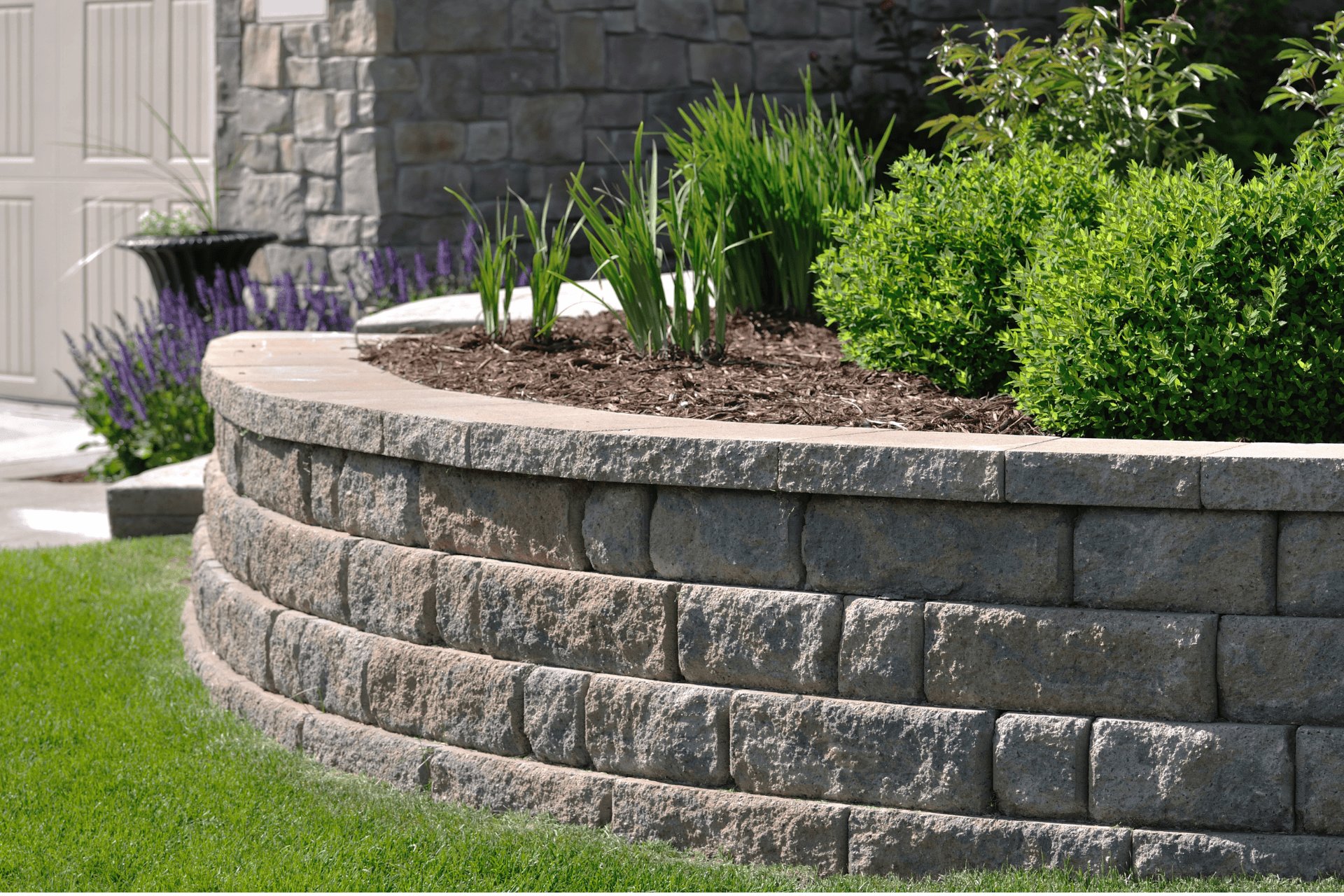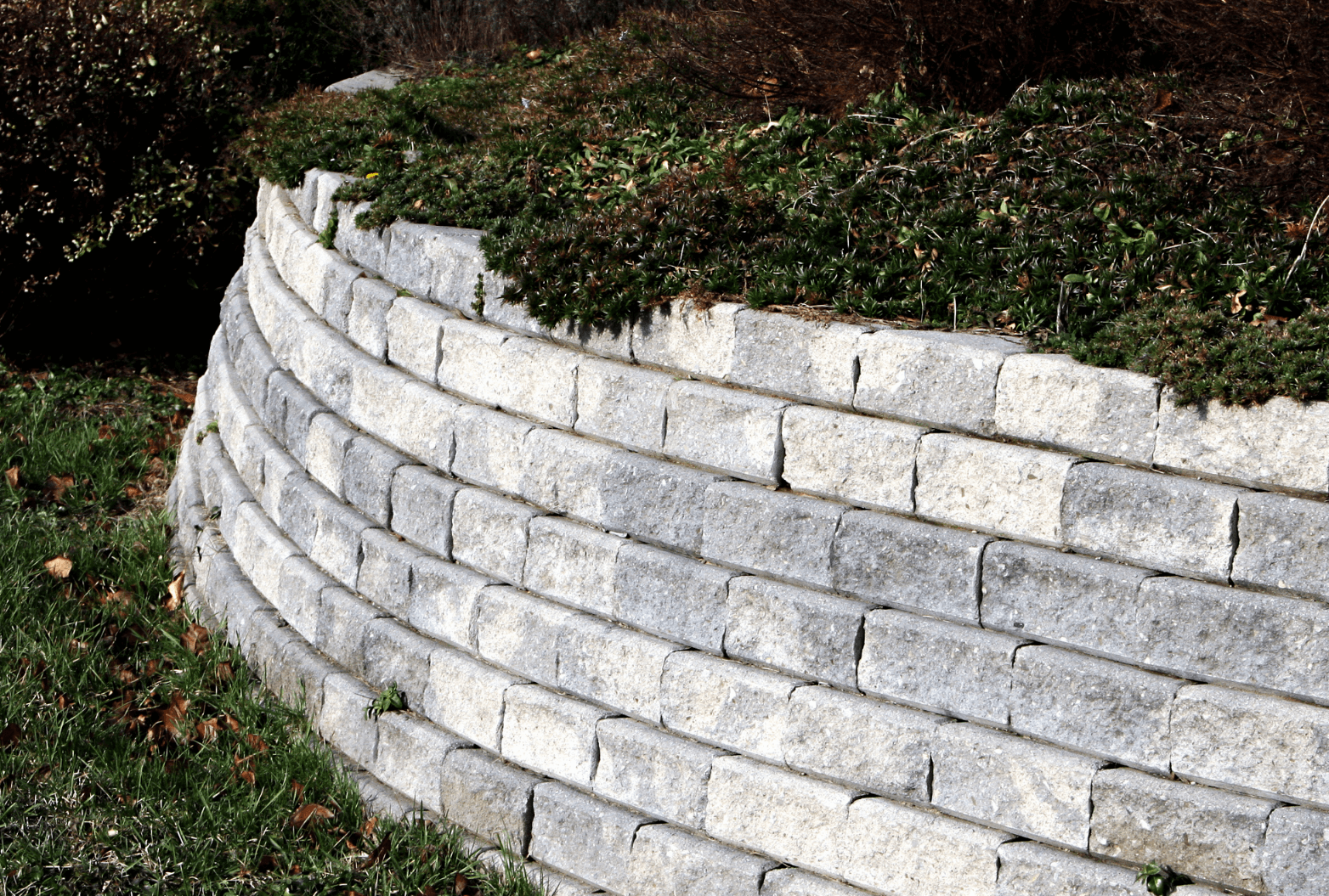CONCRETE RETAINING WALLS
Concrete retaining walls are popular for their strength and versatility. With precise construction, they can be incredibly helpful. It serves as a fantastic solution for weather resistance and the prevention of soil erosion.
These walls can protect your house from the frequent winds and heavy rains that can leave behind damaging effects. Also, they aid you in providing attractive landscaping while protecting your driveway, yard, plants in garden, and more.
They also improve the longevity, safety, privacy, design, and appearance of your property. All this while increasing the monetary value of the property and prevents unnecessary lawsuits.
What Is A Concrete Retaining Wall?
Concrete Retaining Walls are designed and constructed to hold back soil and the pressure of soil. The pressure may be due to liquid, sand, granular materials, and earth filling.
These structures are designed to provide footing to vertical slopes of soil. This is done by strengthen the wall that can not collapse into its natural shape.
Retaining walls are constructed using numerous building materials. However, concrete retaining walls are the most preferred choice for home improvement because of the numerous advantages it has over other options.
They are more economical, reliable, and durable than other expensive alternatives. Additionally, retaining walls offer more customization.
Why Do You Need A Concrete Retaining Wall?
There are many purposes to why a homeowner needs a retaining wall to be built. It is essential to understand the wall's construction if it is for protection from a cliff or hill.
Also, it is vital to know how the base may shift because of gravity pressure and other natural elements. A drainage system is needed for the water in the soil to not cause too much pressure on the way.
This will help create a stable wall with a good structural site. We can help you analyze everything needed to build that strong retaining wall that will last a long time.
Soil erosion can also cause blocking in drainage systems and enhance moisture damage. Hence, you will need to install a concrete wall to prevent soil erosion that can lead to messy landslides.
They are also available in numerous colors, textures, accents, and more. This can add to the beauty of your structural residences or commercial site and maintain a clean drainage. It limits the risk of flooding, primarily that is caused by stormy weather owing to the good drainage it provides. This means a retaining wall can provide a barrier, a drainage, and a footing to stop the flooding. This can also prevent moisture damage on your property.
Also, concrete requires less labor since it is lighter and easy to install. This will ensure an inexpensive and quick solution to your problems.
You can save a lot of money by installing a retaining wall. They decrease the money spent on maintenance by reducing water damage. Also, they are inexpensive when compared to other alternatives.
Types Of Concrete Retaining Walls
There are several types of retaining walls that are used. Some of them are discussed below.
Gravity Retaining Wall
Gravity walls are used when there is only a slight hill without a significant amount of pressure. These are usually massive, and it needs a considerable load to counter pressure. It is a simple wall built to lean against the earth and behind the wall to hold it in place. They are cheaper and easier to install than reinforced walls.
Reinforced Concrete Retaining Wall
Reinforced walls require geogrid, which uses layer soil and concrete to create reinforcements behind the wall to prevent the wall from moving. It is more effective for protection against bigger hills from moving.
Crib Type Concrete Retaining Wall
These are concrete walls that are constructed using small concrete block made of pre-cast concrete. This concrete block is filled with coarse gravel or crushed stone after the concrete surface is settled. This will ensure a drain-free structure.
These blocks are excellent for support planner rooms. However, these blocks are not suitable to support slopes and structures.
Gabion Concrete Retaining Wall
Gabion concrete retaining walls are made of rectangular steel wire mesh blocks that are arranged properly in multiple build of blocks. These blocks are filled with gravel and crushed rocks.
This is an excellent choice if you want to stabilize very steep slopes. Also, it is used for erosion control structures.
Anchored Concrete Retaining Wall
This is made of wires or deep steel cable rods that are fixed sideways into the ground base. Then, the ends are filled with concrete and sometimes with small blocks crushed gravel along with the concrete. The concrete is added to provide an anchor for the wall that is buried.
This type of wall is usually used for retaining wall structure system. They are the most preferred for loose water around over hard rocks.
Piled Retaining Wall
These walls constructed using reinforced surface concrete piles in a line adjacent to one another. The pile blocks are stuffed with gravel into depth to counter the force that pushes over the wall.
Piled retaining walls provide a high level of stiffness that can hold lateral pressure. This is an economical option that can work as both temporary and permanent structures.
How To Choose The Perfect Retaining Wall?
The local conditions can determine how the wall should be constructed as well as the room available for project design and construction. The project may vary from one area to another. Also, the number of materials needed to provide a smooth and proper protection to hold back a hill.
Different kinds of footing needed for the retaining wall can affect the design, the number of materials required to build the wall, and the method used. The construction type and design varies, also can be used in conjunction with other ways depending on the needs of the project. The slope of the hill influences what is needed to create a sustainable build for protection.
The deeper the slope, the more reinforcement is needed to uphold the hill and last for many years. Environmental erosion and downhill slopes need more strength than others.
Any other retaining wall is a setback, meaning that it is leaned against the hill, and weights are added to help counterbalance the weight.
The location of the wall can also affect the related reinforcements needed. In some cases, extra reinforcements are necessary to protect objects resting above them, such as your house, yard, pool, plants in the garden, or driveway.
This can change the installation of the wall. Whether it is for protection against water or weather, extra footing for a room, or to add a stylish touch, we can help you get started.
Our service contractions can help you throughout the smooth process of building a retaining wall that suits your property perfectly at affordable prices.
Request a quote
Santa Clarity Concrete Expert Leads
The deeper the slope, the more reinforcement is needed to uphold the hill and last for many years. Environmental erosion and downhill slopes need more reinforcement than others. Other retaining walls are set backs, meaning that it is leaned against the hill, and weights are added to help counterbalance the weight.
The location of the wall can also affect the types of reinforcements needed. In some cases, extra reinforcements are necessary to protect objects that are resting above them, such as your house, pool, or driveway. This can change the installation of the wall.
Whether it is for the purpose of protection or to add a stylish touch, we can help you get started. Our contractions can help you throughout the entire process of building a retaining wall.


